First, about the floats
Stay as far away from floats as you can. They will cause problems with your layout unless you are experienced in their use. 90% of the time, if there is a problem on a page with floats, the floats are the problem. Instead, you should use display: inline-block, it's the best thing since sliced bread.
Floats can be useful for things like putting an image in a paragraph of text, then allowing the text to flow around the image naturally. Other than that, you can probably find a better way to achieve what you're after.
Next, the spacing
So you have some spacing problems. In general, stay away from margins as much as possible (kind of like floats, but not as bad). Margins add to the box sizing, instead of being included in it, as well as they can do other funky things in different situations. If you have to use a margin, use a margin, but try to avoid them. Instead, use padding where you can. You can utilize a container element, then apply padding to it in order to give the appearance of a margin.
When it comes to inline-block elements, space between the tags in the HTML itself will be rendered as a single space. To get around this, set the font-size of the parent to 0, then reset the font-size on the child elements (the default font-size on all modern browsers is 16 pixels).
Lastly, the alignment
Once you've taken all of the advice above into consideration and applied it to your code, just use text-align: center on the parent, reset it on the children, and you're good to go!
Here, have an example, free of charge
#demo {
text-align: center;
font-size: 0;
list-style: none;
margin: 0;
padding: 0;
}
#demo li {
text-align: left;
font-size: 16px;
display: inline-block;
padding: 10px;
}
#demo img {
height: 243px;
width: 172px;
}
#demo .inner {
background: #fec722;
padding: 3px;
}
<ul id="demo">
<li><div class="inner"><img src="http://goo.gl/0nSAIH"></div></li>
<li><div class="inner"><img src="http://goo.gl/0nSAIH"></div></li>
</ul>
Related

